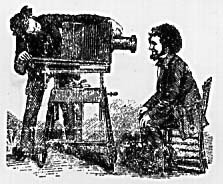Physical Description (and location): The Wall of Death can be found under the University Bridge (in the Southwest corner of the U District on the map). It is visible from the street as you drive under the bridge, but the most common access comes from traffic along the Burke Gilman Trail, which passes literally right by it. The Wall of Death is, perplexingly enough, not actually a wall at all, but rather a pair of large, thick orangey-red bands that overlap about fourteen feet above the ground – it looks a bit like a gigantic mobius strip. The orange bands are supported at eleven points along the circle by tall pale purple spikes positioned alone or in pairs. Emblazoned in capital cutaway letters across the edge facing the trail and the road are the words THE WALL OF DEATH.
Socio-Cultural Uses: The Wall of Death is, somewhat surprisingly, quite a multi-tasker. In just the time I spent observing, visiting, and passing by the structure, I saw it in use as a shelter (for a pair of sleeping forms huddled in dingy sleeping bags against the two back spikes), practice space (for a young man and his saxophone), skatepark (a boy and his girlfriend in Hot Topic hoodies attempting tricks on the ramp opposite), and meeting place (various solitary figures or groups who’d circle aimlessly or stand off to the side until others arrived and they went off to wherever). It’s also a major landmark and talking piece – more than one jogger arrived, took a breather, and then turned around, showing that this was a barometer of distance and a destination.
Place/Role within U-District: The Wall of Death’s location right on the Burke Gilman Trail situates it along one of the major arteries of the U District. The U District itself gets a lot of traffic, since the University has so many students, staff, and visitors. The Wall is visible from bus, car, bike, skateboard, scooter, what-have-you on two paths – the street and the trail. Tons of people pass by it every day on their way to the UW campus, apartments, or Gasworks Park. On a physical level, its location under the bridge gives it a roof and enables it to be a shelter for homeless people or students escaping sudden Seattle showers. Its existence sets the area apart from a normal underpass – it has a specific and unforgettable name, giving the area a unique identity.
announcements
This blog was created by and for students in an Introduction to Cultural Studies class at the University of Washington. Through an investigation of urban experience and representation--in theory, in graphic novels and in our own "readings" of Seattle's University District--we considered the formation and history of cultural studies as an (anti)discipline, with a special emphasis on the questions, "What does cultural studies do, and how do you do cultural studies?"
If you'd like to know more about the class, the blog or our U-District artifact project, please contact Gabrielle Dean: gnodean@u.washington.edu.
If you'd like to know more about the class, the blog or our U-District artifact project, please contact Gabrielle Dean: gnodean@u.washington.edu.
Subscribe to:
Post Comments (Atom)
blog archive
-
▼
2008
(92)
-
▼
June
(30)
- Ave Artwork from Above
- Starbucks on the Ave
- Portage Bay Cafe
- The Wall of Death
- Ruzhen Mongolian Grill
- UWMC Entrance Area
- Cafe Solstice
- The College Inn
- The Wayward Cafe is a collectively run vegan resta...
- The University Branch Library
- Bus route 880: Mukilteo to University District and...
- College Inn Pub
- The U-District Farmers' Market
- 21st Avenue N.E.
- The Burke Gilman Trail - south campus, Brooklyn/Pa...
- Cafe Allegro
- The Blue Moon Tavern
- Brief Introduction: Husky Stadium is mainly known...
- The Corbet Building
- University Heights Center parking lot
- Metro Transit bus route 67
- University Heights Center
- Starbucks - University Ave
- The Ave/"The Ave"
- Cafe Allegro
- THE WALL OF DEATH
- Burke-Gilman Trail--IMA Bridge
- The Burke-Gilman Trail- from the intersection of P...
- Scanner Darkly
- The Alley
-
▼
June
(30)

No comments:
Post a Comment